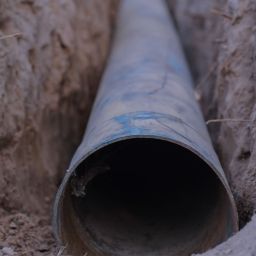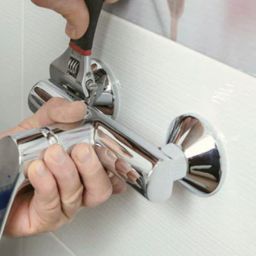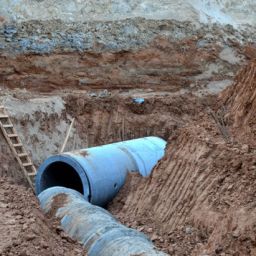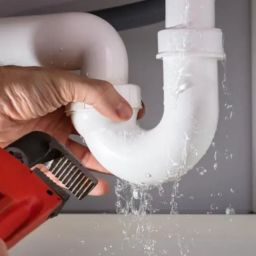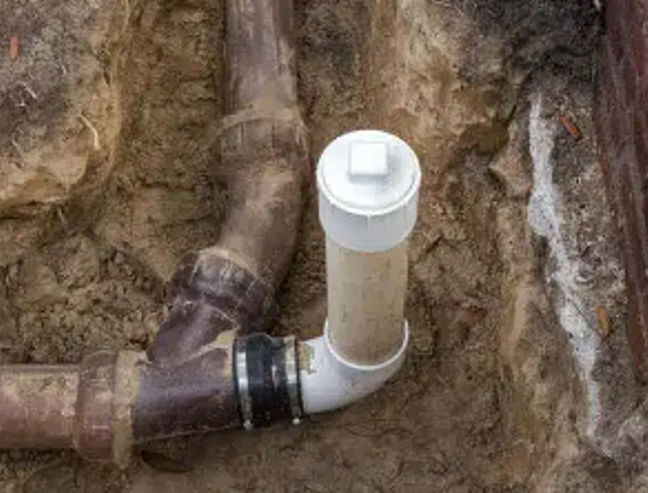
Sewer line issues can be a homeowner’s worst nightmare. When things go wrong, it often leads to unpleasant odors, slow drains, and even sewage backups. Understanding how to tackle these problems can save you time, money, and stress.
This article will help you understand the common issues with sewer lines and the various repair options available.
Identifying Common Sewer Line Problems
Before jumping into repairs, it’s essential to recognize the signs that indicate a problem with your sewer line. Here are some common issues:
Clogs
Clogs are one of the most frequent problems homeowners face. They can occur due to a buildup of grease, hair, soap scum, or foreign objects blocking the flow of waste. If you notice slow-draining sinks or toilets that frequently back up, a clog may be the culprit.
Cracks and Breaks
Over time, sewer pipes can develop cracks or breaks due to ground movement, tree roots, or simply aging materials. These cracks can lead to leaks and more severe issues if not addressed promptly.
Offset Pipes
Offset pipes happen when sections of your sewer line misalign. This can occur due to soil erosion or shifting ground. When this happens, waste may not flow properly, leading to backups.
Collapses
In severe cases, a sewer line may collapse entirely. This is often due to significant structural failure or extensive damage from external pressure. A collapsed sewer line usually requires immediate attention.
Tree Root Intrusion
Tree roots are notorious for invading sewer lines. They can penetrate pipes in search of moisture and nutrients, leading to blockages and damage.
Repair Options for Sewer Lines
Once you’ve identified the issue with your sewer line, it’s time to consider your repair options. Depending on the severity of the problem and your budget, different methods may be more suitable.
Trenchless Repair Methods
Trenchless repair methods have gained popularity due to their efficiency and minimal disruption to your property.
Here are two common trenchless techniques:
Cured-in-Place Pipe (CIPP) Lining
This method involves inserting an inflatable tube coated with resin into the damaged pipe. Once in place, the resin hardens, creating a new inner lining for the pipe. CIPP lining is effective for minor cracks and can extend the life of your sewer line without extensive excavation.
Pipe Bursting
If your sewer line is severely damaged, pipe bursting might be necessary. This technique involves breaking apart the old pipe while simultaneously pulling in a new one. It requires access points at both ends but minimizes disruption to your yard.
Traditional Excavation
For more extensive damage or when trenchless methods aren’t feasible, traditional excavation may be necessary. This process involves digging up the affected area to replace or repair the damaged section of pipe. While effective, it can be disruptive and time-consuming.
Hydro-Jetting
If your primary issue is a stubborn clog caused by grease or tree roots, hydro-jetting might be the solution. This method uses high-pressure water jets to clear blockages without damaging the pipes themselves.
Steps for Repairing a Sewer Line
Now that you understand the common problems and repair options available let’s walk through the steps involved in repairing a sewer line.
Diagnosis
Start by diagnosing the problem using video inspection tools. A professional plumbing service can help identify specific issues within your sewer line.
Choose Your Repair Method
Based on your diagnosis, decide whether trenchless methods or traditional excavation is best suited for your situation.
Prepare for Repairs
If excavation is necessary, mark off the area where work will take place and ensure that all utilities are clear from potential hazards.
Perform Repairs
Depending on your chosen method:
- For trenchless repairs, follow procedures for CIPP lining or pipe bursting.
- For traditional excavation, dig up the affected area, replace or repair the pipe as needed, and then backfill once repairs are complete.
Post-Repair Inspection
After completing repairs, conduct another inspection to ensure everything is functioning correctly and that there are no remaining issues.
Restoration
Finally, restore any disturbed landscaping or structures as needed to return your property to its original condition.
Cost Considerations for Sewer Line Repairs
The cost of repairing a sewer line varies based on factors such as location and severity of damage. For example:
- Trenchless repairs typically range from $3,800 to $10,000.
- Traditional excavation costs can vary from $50 to $250 per foot of pipe replaced.
If you need main sewer line repairs in Phoenix, it’s wise to get multiple quotes from local drain and plumbing services to find an option that fits your budget.
Final Thoughts on Sewer Line Repairs
Sewer line issues can be daunting but understanding how to approach them makes all the difference. Whether you opt for trenchless methods or traditional excavation depends on your specific situation and budget. Always consider hiring professionals for complex repairs to ensure safety and compliance with local regulations.
By staying informed about potential problems and knowing how to address them effectively, you can maintain a healthy plumbing system in your home while avoiding costly emergencies down the road.
Looking for reliable plumbing solutions? At Phoenix Plumbing and Drain, we pride ourselves on our commitment to quality. Learn about us and discover our services designed to meet your residential and commercial plumbing needs. From emergency repairs to routine maintenance, we’ve got you covered!
Contact us today for a consultation!
FAQs
What are the benefits of trenchless sewer repair?
Trenchless sewer repair offers several advantages over traditional methods. Minimal disruption to landscaping and driveways is a key benefit, as it requires only small access points rather than extensive digging. This method is typically quicker, reducing repair time significantly. Additionally, trenchless repairs often result in cost savings due to less labor and restoration work needed after the repair process.
How does pipe bursting work for sewer line repairs?
Pipe bursting is a trenchless method that involves breaking apart an old sewer line while simultaneously installing a new one. A specialized bursting head is inserted into the existing pipe, which fractures it outward, allowing for the new pipe to be pulled through the same path. This technique minimizes surface disruption and is effective for replacing damaged or collapsed pipes, making it a preferred choice for many plumbing professionals.
What are the signs that I need to repair my sewer line?
Several signs indicate a potential need for sewer line repair. Gurgling sounds from drains often suggest blockages or breaks in the line. Lingering odors of sewage around your property can signal leaks or damage. Additionally, slow drainage in sinks and toilets, along with soggy patches in your yard, may indicate underlying issues with your sewer system.
How much does traditional excavation for sewer repair cost?
The cost of traditional excavation for sewer repairs can vary widely based on factors such as location and extent of damage. Generally, homeowners can expect to pay between $50 to $250 per foot for excavation and repair services. Additional costs may arise from restoring landscaping or pavement after the work is completed, potentially increasing total expenses significantly.
Can tree root growth be completely prevented in sewer lines?
Completely preventing tree root growth in sewer lines is challenging but can be managed through several strategies. Regular maintenance, such as root cutting and using root barriers, can help mitigate intrusion. However, certain tree species are more aggressive in seeking out moisture sources, making it difficult to eliminate the risk entirely. Homeowners should consider planting trees away from sewer lines to reduce potential problems.


